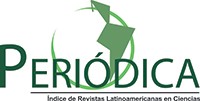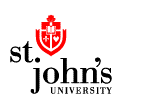USE OF CITRUS BY-PRODUCTS: FERMENTATION OF THE ORANGE BARK BY ASPERGILLUS NIGER VAN TIEGHEM, 1867
DOI:
https://doi.org/10.24039/rtb2021191882Keywords:
Aspergillus niger, orange peel, fermentation, inorganic and organic nitrogenAbstract
The use of citrus by-products was evaluated through the fermentation of the orange peel by means of Aspergillus niger van Tieghem strain, 1867, which was obtained by inoculation in a petri dish, at a temperature of 35°C and a pH of 4,3. The crushed orange peel was used as a substrate, partially dehydrated, spread on trays, dried in cardboard trays and without heat pretreatment, adding only components and mineral nutrients, and A. niger was cultivated at different fermentation temperatures between 8°C and 40 °C. Upon completion of the fermentation process of the pretreated orange peel, maximum percentages of transformation of mineral nitrogen to organic nitrogen of 34.5% were obtained, for a value of the thermal integral between 0°C and 320°C per day, obtaining for a kg of dry matter, 6.6% protein for 600 g of product (feed) with 18% protein. Finally, the variation of the pH of the substrate was correlated as a function of the thermal integral of the crop; the performance of the transformation of mineral to organic nitrogen as a function of the thermal integral of the crop and the evolution of the organic nitrogen content of the orange substrate fermented by A. niger compared to the thermal integral. The results show high correlation coefficients. It is concluded that it is possible to take advantage of citrus by-products by fermentation of the orange peel by A. niger.Downloads
Published
How to Cite
Issue
Section
License
Copyright (c) 2021 The Biologist

This work is licensed under a Creative Commons Attribution-NonCommercial-NoDerivatives 4.0 International License.
Objeto: El AUTOR-CEDENTE transfiere de manera TOTAL Y SIN LIMITACIÓN alguna al CESIONARIO (Revista The Biologist (Lima)) los derechos patrimoniales que le corresponden sobre sus obras por el tiempo que establezca la ley internacional. En virtud de lo anterior, se entiende que el CESIONARIO adquiere el derecho de reproducción en todas sus modalidades, incluso para inclusión audiovisual; el derecho de transformación o adaptación, comunicación pública, traducción, distribución y, en general, cualquier tipo de explotación que de las obras se pueda realizar por cualquier medio conocido o por conocer en el territorio nacional o internacional.
Remuneración: La cesión de los derechos patrimoniales de autor que mediante este contrato se hace será a título gratuito.
Condiciones y legitimidad de los derechos: El AUTOR-CEDENTE garantiza que es propietario integral de los derechos de explotación de la(s) obra(s) y en consecuencia garantiza que puede contratar y transferir los derechos aquí cedidos sin ningún tipo de limitación por no tener ningún tipo de gravamen, limitación o disposición. En todo caso, responderá por cualquier reclamo que en materia de derecho de autor se pueda presentar, exonerando de cualquier responsabilidad al CESIONARIO.
Licencia de acceso abierto: El AUTOR-CEDENTE autoriza que manuscrito publicado en la Revista Científica The Biologist (Lima) (versión Impresa ISSN 1816-0719, versión en línea ISSN 1994-9073) permanece disponible para su consulta pública en el sitio web http://revistas.unfv.edu.pe/index.php/rtb/index y en los diferentes sistemas de indexación y bases de datos en las que la revista tiene visibilidad, bajo la licencia Creative Commons, en la modalidad Reconocimiento-No comercial- Sin Trabajos derivados –aprobada en Perú, y por lo tanto son de acceso abierto. De ahí que los autores dan, sin derecho a retribución económica, a la Escuela Profesional de Biología, Facultad de Ciencias Naturales y Matemática de la Universidad Nacional Federico Villarreal (EPB - FCCNM - UNFV), los derechos de autor para la edición y reproducción a través de diferentes medios de difusión.









































